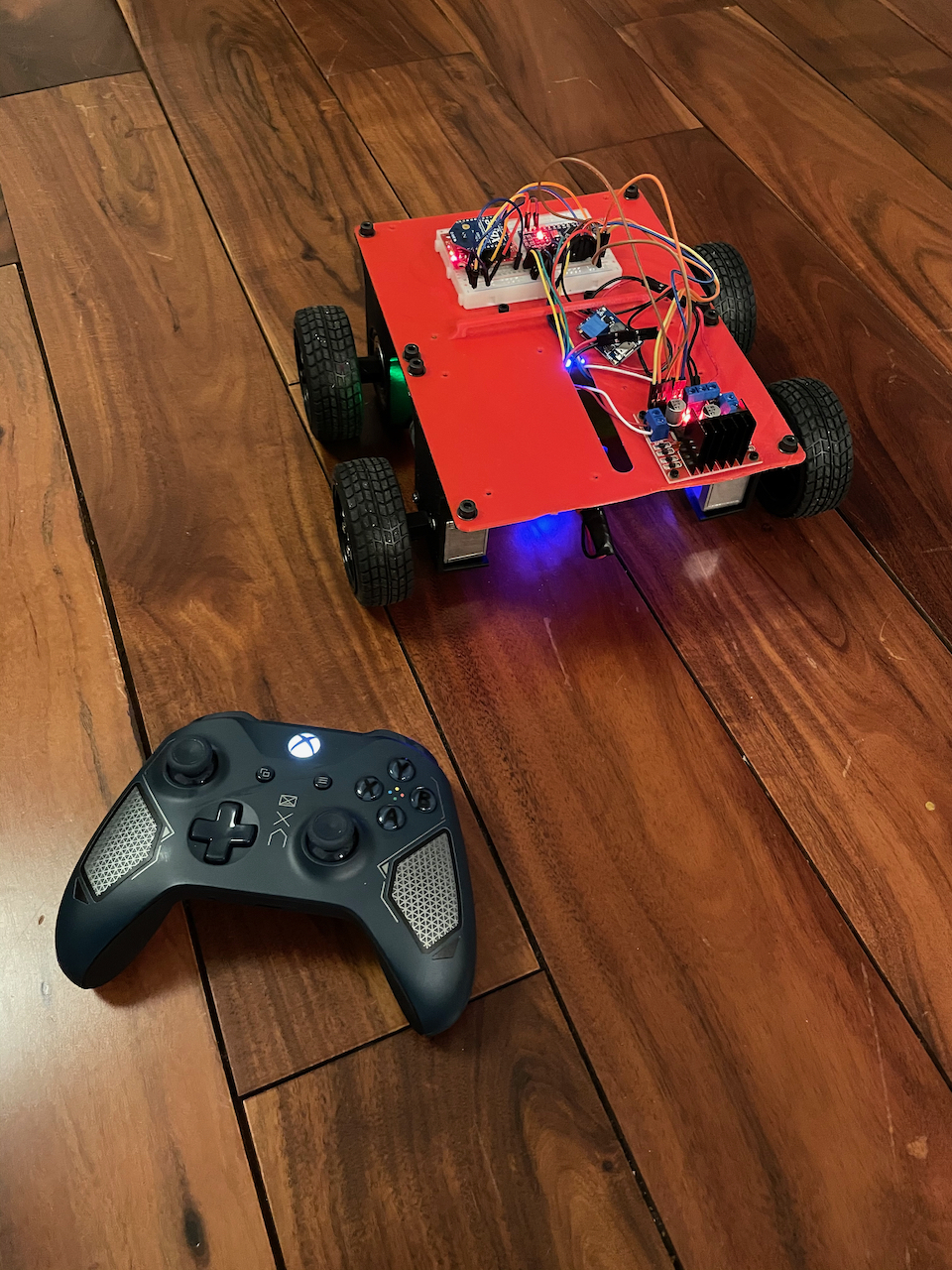makerdad
makerdad
Driving Rover with an Xbox Controller
Before jumping to the PID implementation and eventually autonomous driving, I wanted to make sure that the Rover v2 could drive and turn with stability. I could have done a simple keyboard implementation but I really wanted to integrate an old Xbox controller I had lying around.
What I have seems to be an Xbox One controller and it connected to my Mac over Bluetooth with no issues. After some research, I found out that pygame is actually the best way to work with these game pads.
I had never used pygame before but it felt very natural. It has a great abstraction layer for the various controls on the gamepad so I could easily extract axis data from joysticks relatively easily:
import pygame
pygame.init()
controller = pygame.joystick.Joystick(0)
controller.init()
while True:
left_power = controller.get_axis(1)
right_power = controller.get_axis(3)
left_speed = int(abs(left_power) * MAX_POWER)
right_speed = int(abs(right_power) * MAX_POWER)
I then coupled this with the previous XBee implementation I had done and hooked it up with pyserial. To Python, XBee looks like just another USB port and thanks to the magic XBees all the remote control part is taken care of.
After some tinkering, I had a sweet little Python script that got the control values from the Xbox controller and passed them on to the Arduino on the rover. Here it is in action:
Overall I’m very happy with this. I think the crappy tires are causing issues with traction though. I will have to swap them out or print new ones using the new direct drive extruder I got.
Next step: PID implementation, two way data transfer, and eventually ROS integration for control. I also need to redesign the LIDAR piece to fit on the rover. Instead of pulleys, I’m planning to do a gear based implementation.
